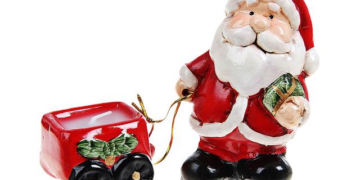This article originally appeared in Knowable Magazine.
Back at the turn of the 21st century, Valley fever was an obscure fungal disease in the United States, with fewer than 3,000 reported cases per year, mostly in California and Arizona. Two decades later, cases of Valley fever are exploding, increasing more than sevenfold and expanding to other states.
And Valley fever isn’t alone. Fungal diseases in general are appearing in places they have never been seen before, and previously harmless or mildly harmful fungi are turning deadly for people. One likely reason for this worsening fungal situation, scientists say, is climate change. Shifts in temperature and rainfall patterns are expanding where disease-causing fungi occur; climate-triggered calamities can help fungi disperse and reach more people; and warmer temperatures create opportunities for fungi to evolve into more dangerous agents of disease.
For a long time, fungi have been a neglected group of pathogens. By the early 2000s, researchers were already warning that climate change would make bacterial, viral and parasite-caused infectious diseases like cholera, dengue and malaria more widespread. “But people were not focused at all on the fungi,” says Arturo Casadevall, a microbiologist and immunologist at the Johns Hopkins Bloomberg School of Public Health. That’s because, until recently, fungi haven’t troubled humans much.
Our high body temperature helps explain why. Many fungi grow best at around 12 to 30 degrees Celsius (roughly 54 to 86 degrees Fahrenheit). So, while they find it easy to infect trees, crops, amphibians, fish, reptiles and insects — organisms that do not maintain consistently high internal body temperatures — fungi usually don’t thrive inside the warm bodies of mammals, Casadevall wrote in an overview of immunity to invasive fungal diseases in the 2022 Annual Review of Immunology. Among the few fungi that do infect humans, some dangerous ones, such as species of Cryptococcus, Penicillium and Aspergillus, have historically been reported more in tropical and subtropical regions than in cooler ones. This, too, suggests that climate may limit their reach.
Fungi on the move
Today, however, the planet’s warming climate may be helping some fungal pathogens spread to new areas. Take Valley fever, for instance. The disease can cause flu-like symptoms in people who breathe in the microscopic spores of the fungus Coccidioides. The climatic conditions favoring Valley fever may occur in 217 counties of 12 US states today, according to a recent study by Morgan Gorris, an Earth system scientist at the Los Alamos National Laboratory in New Mexico.
But when Gorris modeled where the fungi could live in the future, the results were sobering. By 2100, in a scenario where greenhouse gas emissions continue unabated, rising temperatures would allow Coccidioides to spread northward to 476 counties in 17 states. What was once thought to be a disease mostly restricted to the southwestern US could expand as far as the US-Canadian border in response to climate change, Gorris says. That was a real “wow moment,” she adds, because that would put millions more people at risk.

Some other fungal diseases of humans are also on the move, such as histoplasmosis and blastomycosis. Both, like Valley fever, are increasingly seen outside what was thought to be their historical range.
Such range extensions have also appeared in fungal pathogens of other species. The chytrid fungus that has contributed to declines in hundreds of amphibian species, for example, grows well at environmental temperatures between 17 and 25 degrees Celsius (63 to 77 degrees Fahrenheit). But the fungus is becoming an increasing problem at higher altitudes and latitudes, likely because rising temperatures are making previously cold regions more welcoming for the chytrid. Similarly, white pine blister rust, a fungus that has devastated some species of white pines across Europe and North America, is expanding to higher elevations where conditions were previously unfavorable. This has put more pine forests at risk. Changing climatic conditions are also helping drive fungal pathogens of crops, like those infecting bananas, potatoes and wheat, to new areas.
A warming climate also changes cycles of droughts and intense rains, which can increase the risk of fungal diseases in humans. One study of more than 81,000 cases of Valley fever in California between 2000 and 2020 found that infections tended to surge in the two years immediately following prolonged droughts. Scientists don’t yet fully understand why this happens. But one hypothesis suggests that Coccidioides survives better than its microbial competitors during long droughts, then grows quickly once rains return and releases spores into the air when the soil begins to dry again. “So climate is not only going to affect where it is, but how many cases we have from year to year,” says Gorris.
By triggering more intense and frequent storms and fires, climate change can also help fungal spores spread over longer distances. Doctors have observed unusually large outbreaks of Valley fever just after dust storms or other events that kick up clouds of dust. Similarly, researchers have found a surge in Valley fever infections in California hospitals after large wildfires as far as 200 miles away. Scientists have seen this phenomenon in other species too: Dust storms originating in Africa have been implicated in moving a coral-killing soil fungus to the Caribbean.
Researchers are now sampling the air in dust storms and wildfires to see if these events can actually carry viable, disease-causing fungi for long distances and bring them to people, causing infections. Understanding such dispersal is key to figuring out how diseases spread, says Bala Chaudhary, a fungal ecologist at Dartmouth College who coauthored an overview of fungal dispersal in the 2022 Annual Review of Ecology, Evolution, and Systematics. But there’s a long road ahead: Scientists still don’t have answers to several basic questions, such as where various pathogenic fungi live in the environment or the exact triggers that liberate fungal spores out of soil and transport them over long distances to become established in new places.
Evolving heat tolerance
Helping existing fungal diseases reach newer places isn’t the only effect of climate change. Warming temperatures can also help previously innocuous fungi evolve tolerance for heat and become deadlier. Researchers have long known that fungi are capable of this. In 2009, for example, researchers showed that a fungus — in this case a pathogen that infects hundreds of insect pests — could evolve to grow at 37 degrees Celsius, five degrees higher than its previous upper thermal limit, after just four months. More recently, researchers grew a dangerous human pathogen, Cryptococcus deneoformans, at both 37 degrees Celsius (similar to human body temperature) and 30 degrees Celsius in the lab. The higher temperature triggered a fivefold rise in mutations in the fungus’s DNA compared to the lower temperature. Rising global temperatures, the researchers speculate, could thus help some fungi rapidly adapt, increasing their ability to infect people.
There are examples from the real world too. Before 2000, the stripe rust fungus, which devastates wheat crops, was restricted to cool, wet parts of the world. But since 2000, certain strains of the fungus have become better adapted to higher temperatures. These sturdier strains have been replacing the older strains and spreading to new regions.

This is worrying, says Casadevall, especially with hotter days and heatwaves becoming more frequent and intense. “Microbes really have two choices: adapt or die,” he says. “Most of them have some capacity to adapt.” As climate change increases the number of hot days, evolution will select more strongly for heat-resistant fungi.
And as fungi in the environment adapt to tolerate heat, some might even become capable of breaching the human temperature barrier.
This may have happened already. In 2009, doctors in Japan isolated an unknown fungus from the ear discharge of a 70-year-old woman. This new-to-medicine fungus, which was given the name Candida auris, soon spread to hospitals around the world, causing life-threatening bloodstream infections in already sick patients. The World Health Organization now lists Candida auris among its most dangerous group of fungal pathogens, partly because the fungus is showing increasing resistance to common antifungal drugs.
“In the case of India, it’s really a nightmare,” says Arunaloke Chakrabarti, a medical mycologist at the Postgraduate Institute of Medical Education and Research in Chandigarh, India. When C. auris was first reported in India more than a decade ago, it was low on the list of Candida species threatening patients, Chakrabarti says, but now, it’s the leading cause of Candida infections. In the US, cases rose sharply from 63 between 2013 and 2016 to more than 2,300 in 2022.
Where did C. auris come from so suddenly? The fungus appeared simultaneously across three different continents. Each continent’s version of the fungus was genetically distinct, suggesting that it emerged independently on each continent. “It’s not like somebody took a plane and carried them,” says Casadevall. “The isolates are not related.”

Since all continents are exposed to the effects of climate change, Casadevall and his colleagues think that human-induced global warming may have played a role. C. auris may always have existed somewhere in the environment — potentially in wetlands, where researchers have recovered other pathogenic species of Candida. Climate change, they argued in 2019, may have exposed the fungus to hotter conditions over and over again, allowing some strains to become heat-tolerant enough to infect people.
Subsequently, scientists from India and Canada found C. auris in nature for the first time, in the Andaman Islands in the Bay of Bengal. This “wild” version of C. auris grew much slower at human body temperature than did the hospital versions. “What that suggests to me is that this stuff is all over the environment and some of the isolates are adapting faster than others,” says Casadevall.
Like other explanations for C. auris’s origin, Casadevall’s is only a hypothesis, says Chakrabarti, and still needs to be proved.
One way to establish the climate change link, Casadevall says, would be to review old soil samples and see if they have C. auris in them. If the older versions of the fungus don’t grow well at higher temperatures, but over time they start to, that would be good evidence that they’re adapting to heat.
In any case, the possibility of warmer temperatures bringing new fungal pathogens to humans needs to be taken seriously, says Casadevall — especially if drug-resistant fungi that currently infect species of insects and plants become capable of growing at human body temperature. “Then we find ourselves with organisms that we never knew before, like Candida auris.”
Doctors are already encountering novel fungal infections in people, such as five new-to-medicine species of Emergomyces that have appeared mostly in HIV-infected patients across four continents, and the first record of Chondrostereum purpureum — a fungus that infects some plants of the rose family — infecting a plant mycologist in India. Even though these emerging diseases haven’t been directly linked to climate change, they highlight the threat fungal diseases pose. For Casadevall, the message is clear: It’s time to pay more attention.
Editor’s note: This story was updated on September 27, 2023, to correct a mischaracterization of malaria. It is caused by a parasite, not a virus or a bacterium as was originally stated.
10.1146/knowable-092623-2
Shreya Dasgupta is an independent science journalist based in Bangalore, India.
This article originally appeared in Knowable Magazine, an independent journalistic endeavor from Annual Reviews. Sign up for the newsletter.
>>> Read full article>>>
Copyright for syndicated content belongs to the linked Source : Popular Science – https://www.popsci.com/environment/climate-change-fungal-diseases/































